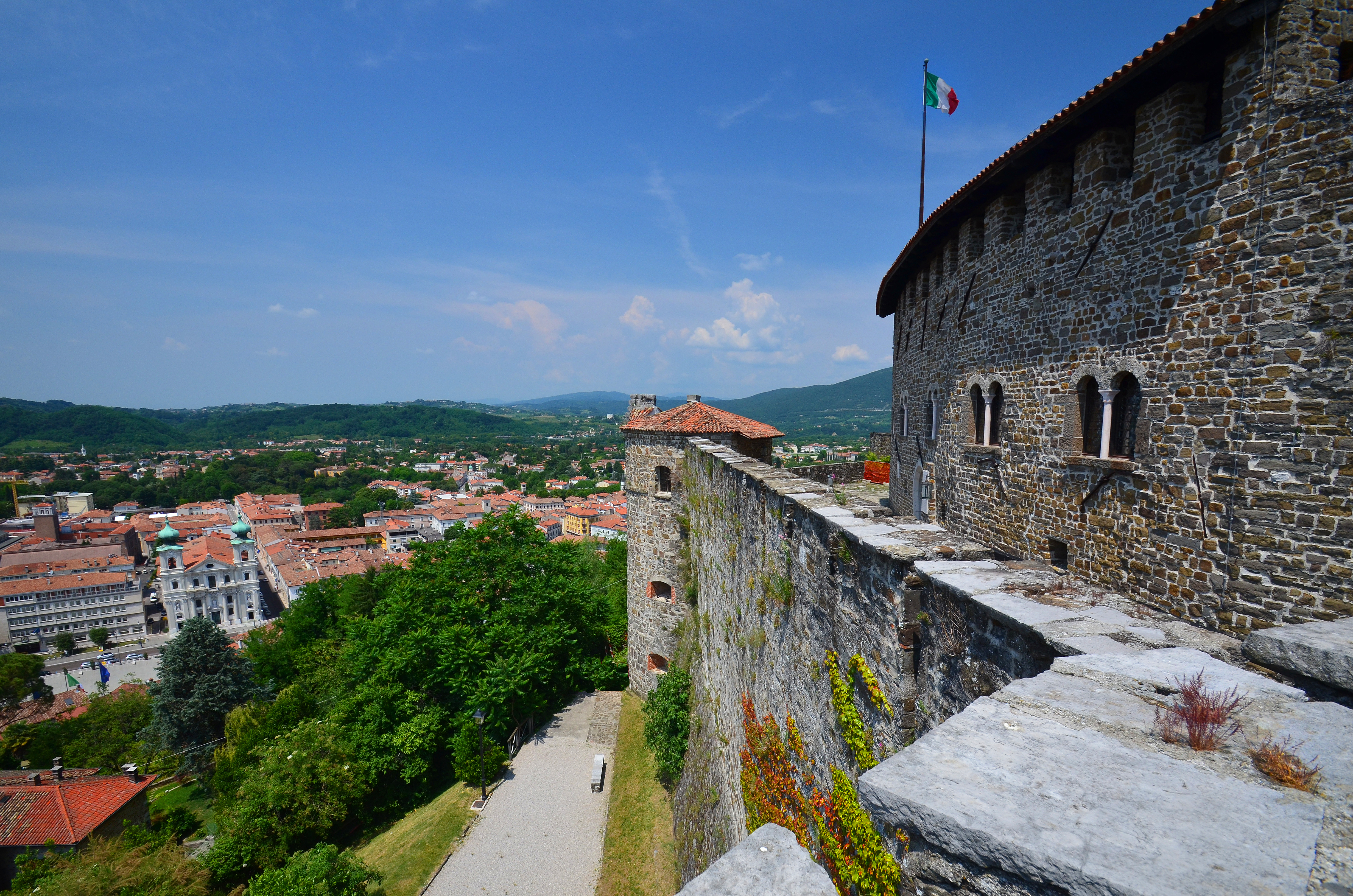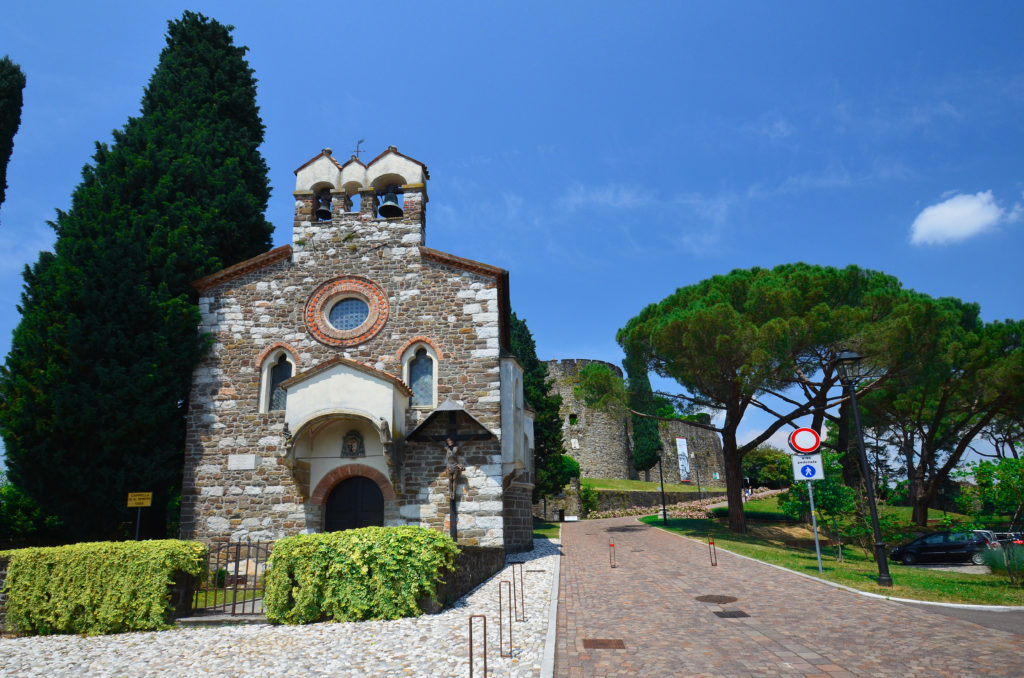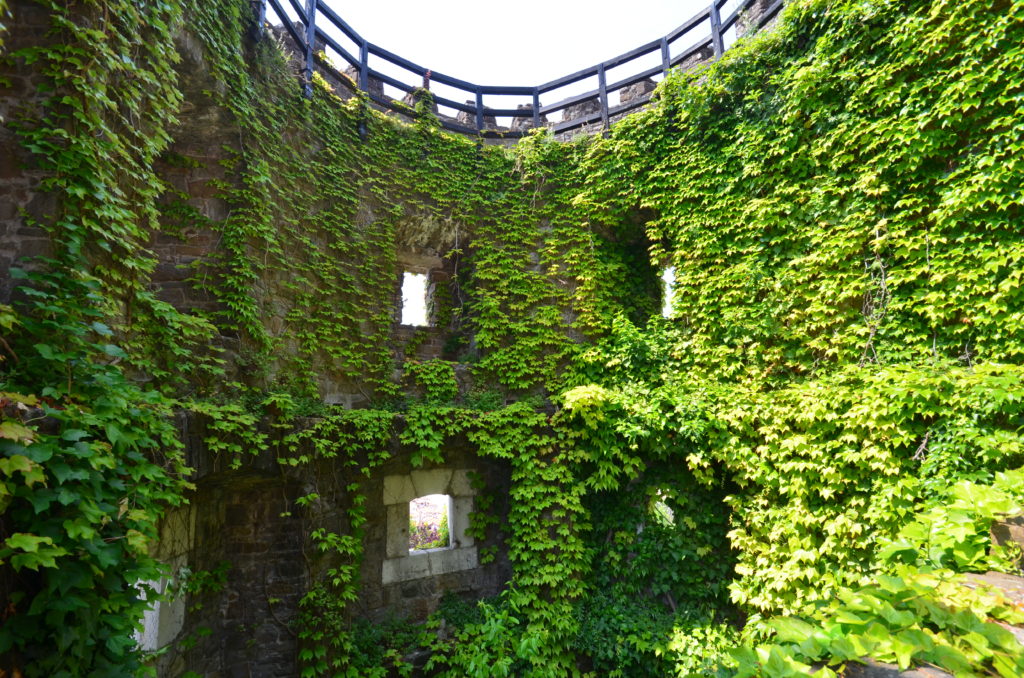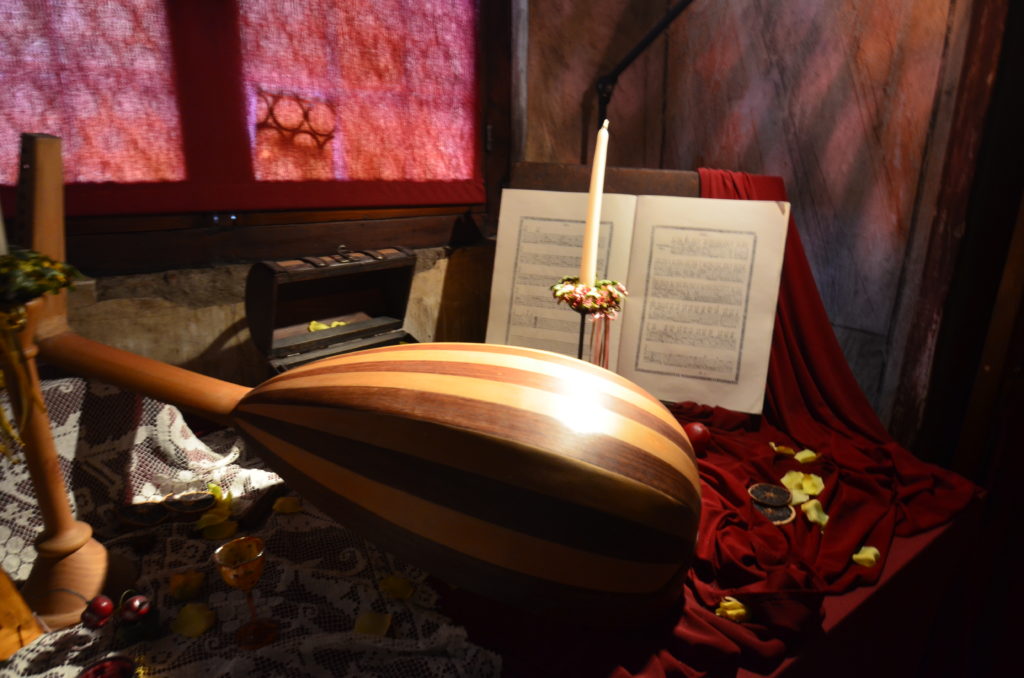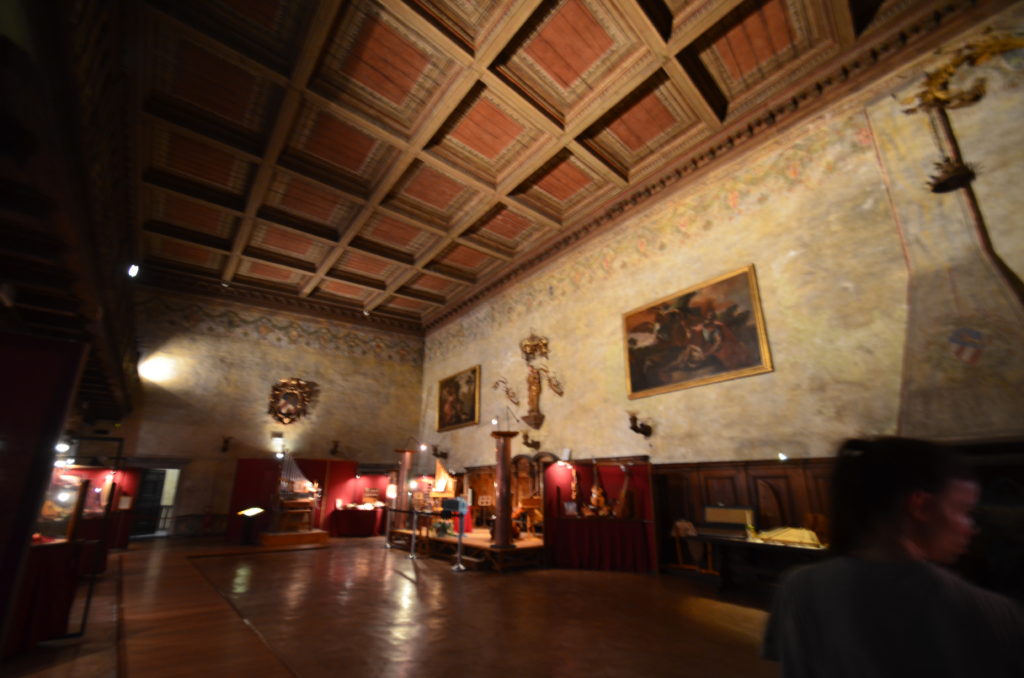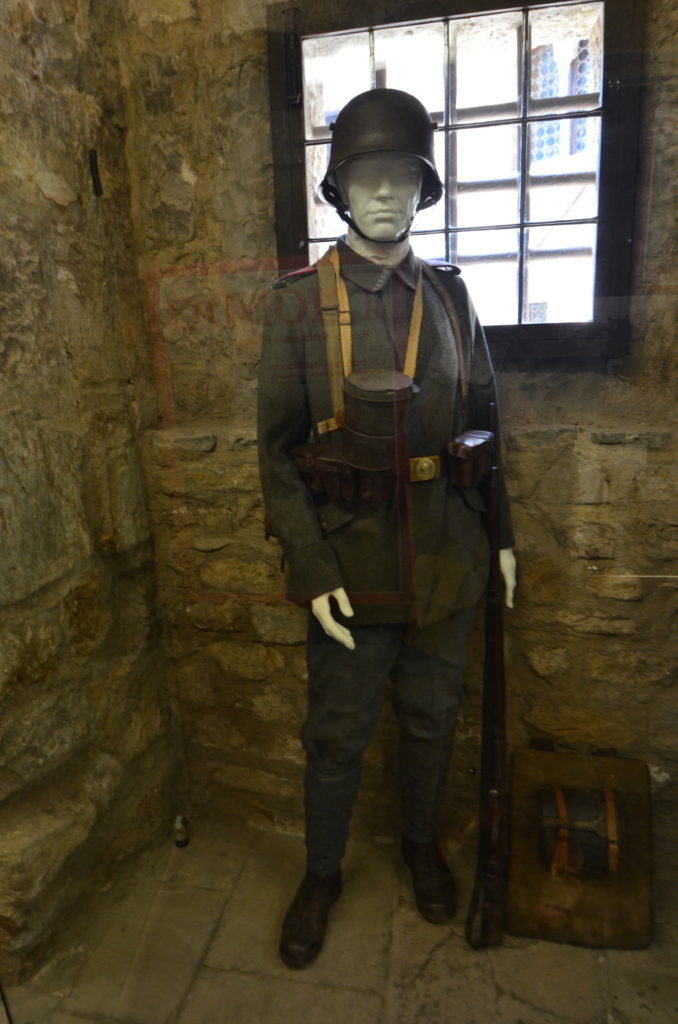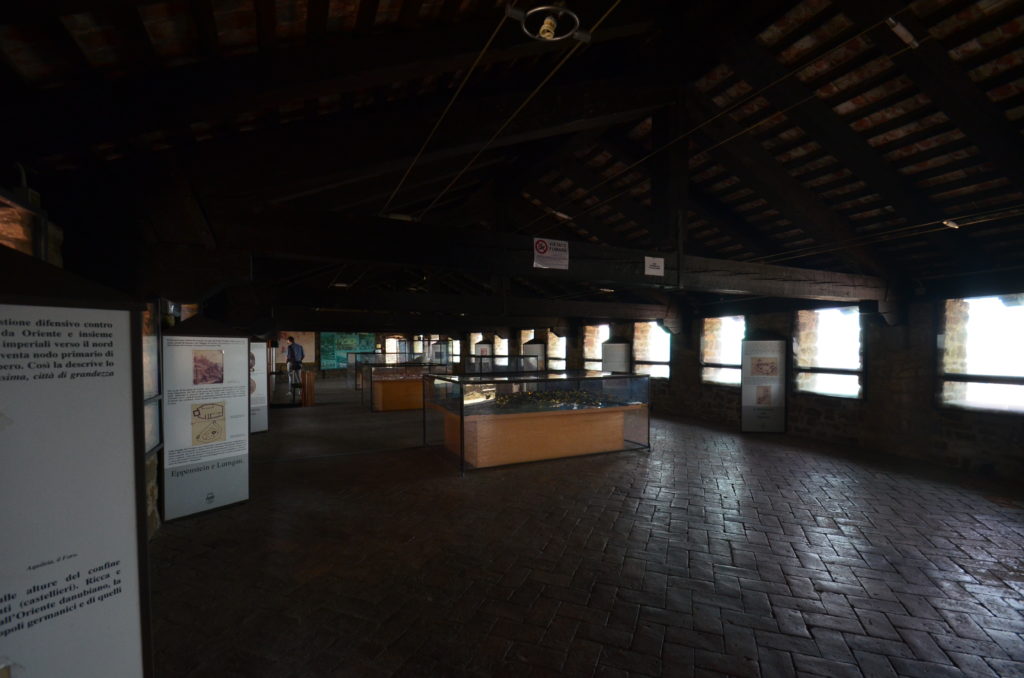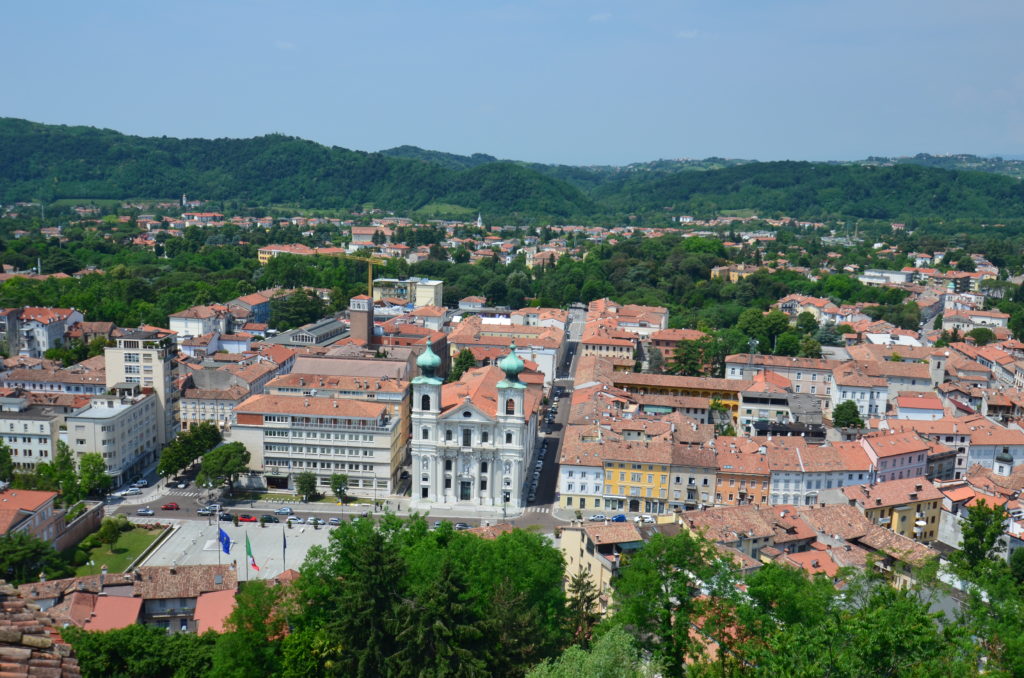For those who’ve never heard of Gorizia, this small Italian town lies near the border of Slovenia. At various times, it has been ruled by the Venetians, French and Austrians. At the beginning of WWI, it was under Austrian rule until being conquered by the Italians in 1916 and again in 1918. To make matters more confusing, the boundary was also disputed after WWII when outlying areas of the town went to Yugoslavia in 1947.
It’s no wonder that a WWI museum is located here. But you wouldn’t know today that so many battles were fought here. Instead, the red-tiled town (which was mainly rebuilt in the 1920s due to significant damage in WWI) seems peaceful and definitely not touristy.
My other daughter quickly vetoed the plan to see a war museum. Thankfully, Gorizia Castle is located next door and we went to visit it while my husband and other daughter went to the trenches.
Between the two landmarks lies a stone church with a postage-size front yard. We chose to meet here 90 minutes later.
Climbing up the large steps, we entered a stone gate. With the castle to our right and the outer wall to our left, we ascended up the hill. Soon, an ivy-covered turret area appeared and we climbed the wall to see a birds-eye view of the town.
At the top, we paid the admission price, which was only 3 or 4 Euros and entered the venerable 11th century structure. What surprised me the most was seeing furniture in each of the rooms. Usually with structures this old, you pass by a room and a placard might say it was the dining room. In this case, the dining room had actual dining room furniture.
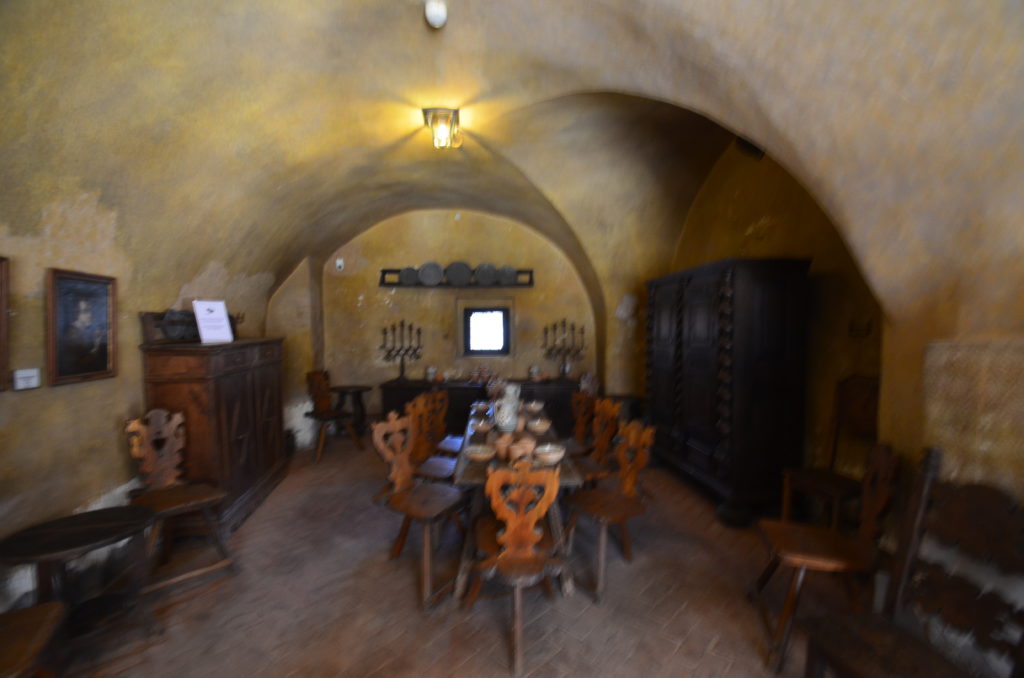
Due to damage throughout the centuries, the city undertook a massive restoration campaign from 1935-1937 to restore the castle to its original splendor. We noticed that all the rooms came off of a large courtyard which we later learned is called the Court of the Lanzi. I always wondered how they had light inside the structure and this explained light coming from the outer wall and the courtyard.
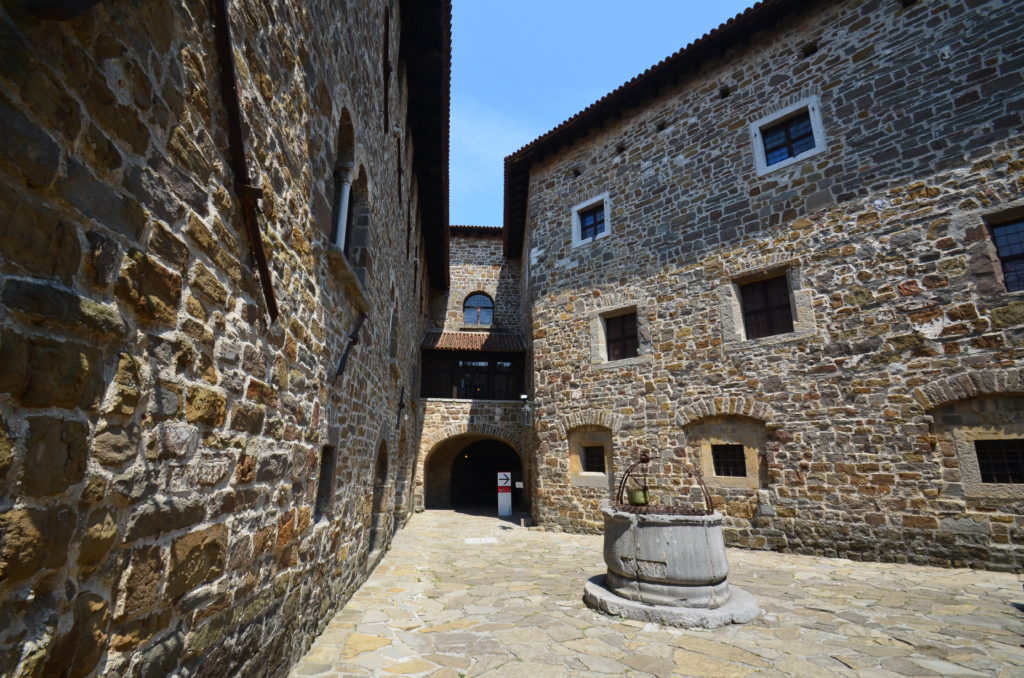
Upstairs, we went into a music room that had a display case of various instruments as well as several halls that served as meeting and reception rooms.
We also passed by the prison which was exhibiting a WWI exhibit. We saw many different military uniforms and learned about the different fronts and battle that occurred in the area.
Lastly, we walked up another flight of stairs to the chapel and nursery areas.
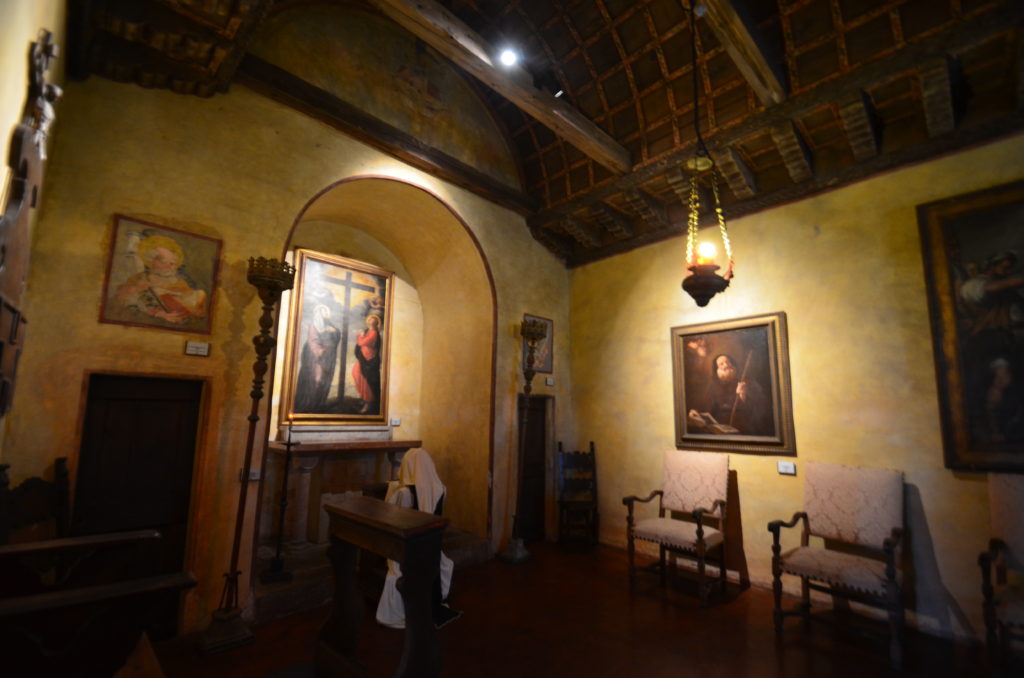
We walked through a large room that was covered but open to the outside (this room was directly above a large diplomatic room below). From here we saw amazing views of Gorizia and we could walk all the way around the castle on this walk.
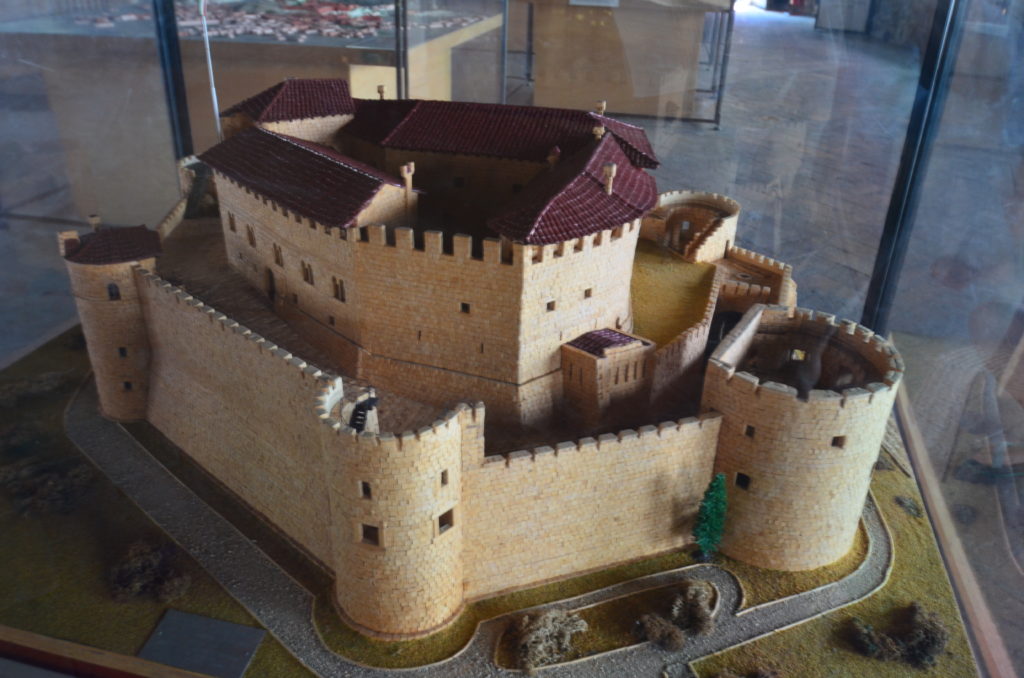
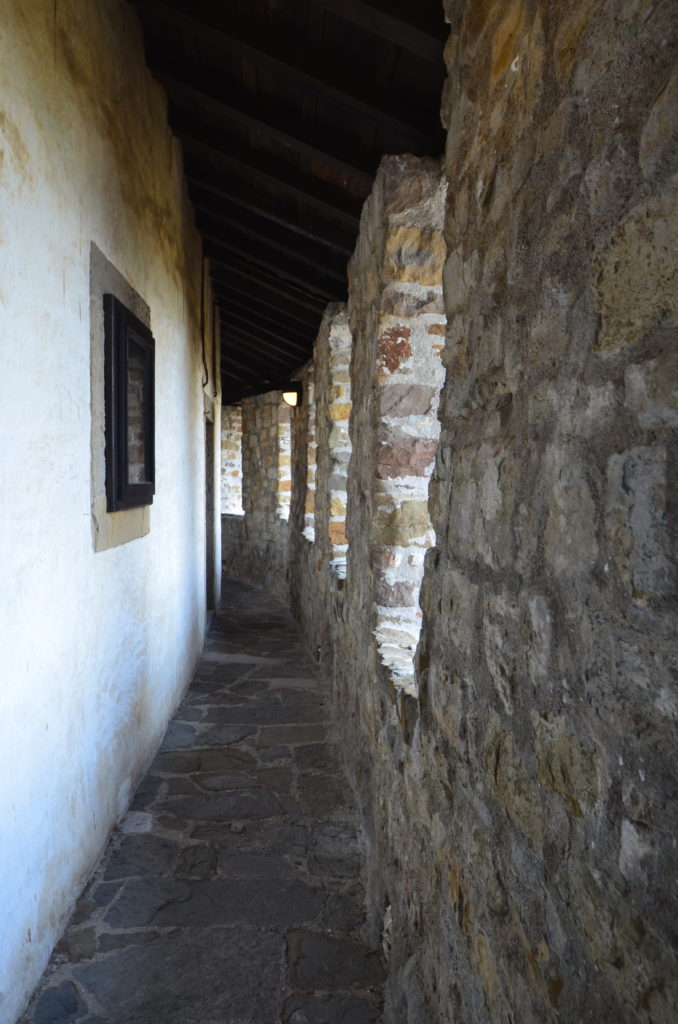

For more information about Castello di Gorizia, click here.
